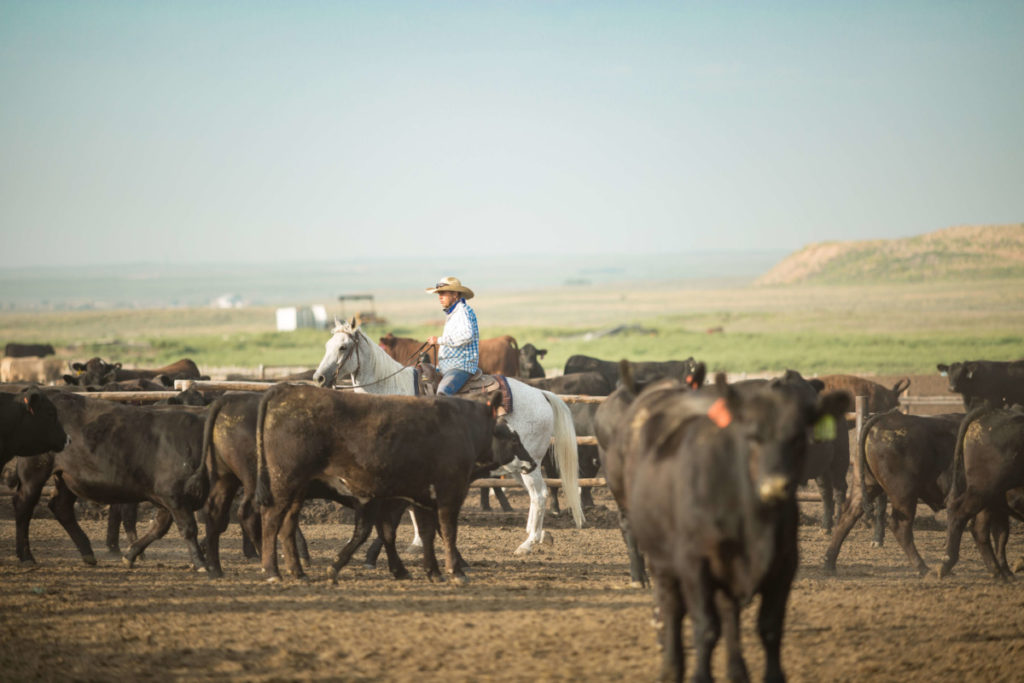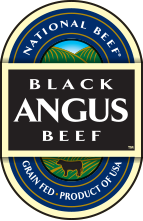Q&A Irsik & Doll Feedyard

Mark Sebranek
Read about the importance of a feedyard in the beef lifecycle.
What’s a feedyard (or feedlot)?
A Feedyard is the third phase of beef production, at this stage the animal has a strong frame and is ready to gain weight and add some fat, AKA marbling that makes beef taste so good.
How are new cattle received?
Small things can make a big difference. First when cattle arrive, special care is taken when unloading them into the pen. (University experts helped us design an easy flow system.) They are given food, water and allowed to acclimate. The next day, they are taken to the Process Barn and given the necessary vaccinations.
How do you keep track of each individual animal?
Cattle are identified with a numbered ear tags, kind of like an earring.
Why are vaccines important and isn’t it hard to keep track of the information?
An immunization program prevents disease and maintains herd health. Vaccination programs result in fewer sick animals, which requires less treatment and antibiotic use and less stress on the animals. With the help of technology animal data such as weight, condition, and vaccination history is entered into the computer system and can be traced back to the individual animal.
What’s needed to maintain a healthy herd while at the feedyard?
Cattle need adequate exercise, good nutrition, clean water and room to lie down. Low stress handling techniques are used at all times to prevent sickness/injury.
What do cattle eat and how often do they get fed?
We feed our cattle three times a day, just like us – breakfast, lunch and dinner. They are fed at the same time everyday. We have consulting animal nutritionists that help us formulate balanced rations to ensure healthy weight gain for the cattle. Basically our rations consist of chopped alfalfa and flake corn, some protein pellets as well as micro ingredients (vitamins, minerals). We start with a higher ratio of chopped alfalfa and then slowly reduce the amount of hay and increase the corn. A high-energy diet helps marbling, improves the grade, helps the texture and ultimately provides a better eating experience. A good diet is important to animal health; we found that if cattle eat, drink and exercise – they’ll be healthy.
Where do you get your feed?
The majority of our hay and corn comes from local farmers within a few miles of our operation.
Are all cattle finished at the same time?
Our specialty is shipping cattle when they are ready. Our cattle are sorted one head at a time out of the pen by a cowboy. We are looking for cattle that are going to do best at the packing plant. Our goal is the best eating experience for our customers.
How do you know when animals are sick?
Pen Riders are “Caretakers” that are responsible for the health and well being of the cattle. They are specially trained to detect sickness. When an animal is sick, they are separated from the herd and moved to an Animal Care Facility. Here they are examined more closely and placed on a treatment program that can include special care and diet as well as medications if required to get well.
How are antibiotics used?
Antibiotics are sometimes used to treat sick animals. Treating sick animals is expensive, so we focus on prevention and early detection of health challenges. We have better screening tools than in the past, and are better able to identify illnesses that need antibiotics and those that don’t. With the help of veterinarians, we are able to provide the right treatment for the right amount of time and get the animal home quicker. Preserving the effectiveness of antibiotics is a critical issue for both animal and human health. As pointed out by the American Association of Pediatrics (AAP), the overuse or misuse of antibiotics in both human and animal health could impact our ability to treat infectious diseases in both animals and humans. None of us want that to happen. We use the Beef Quality Assurance program and research to maintain high standards of animal care and health and to help us continuously improve how we use tools like antibiotics.
Where does all the manure go?
Overall sustainability is the goal for agriculture. By working together with crop farmers, manure from feedyards is used as fertilizer providing resources in a balanced cycle.
How important are partnerships between ranchers, feedyards and packing plants?
Everyone has the same goal – to provide the best beef eating experience. So the partnership between the segments is extremely important. The packing facility provides feedback on the cattle that can be relayed back to the rancher.
